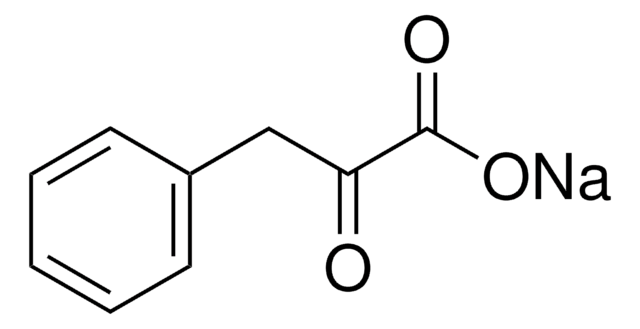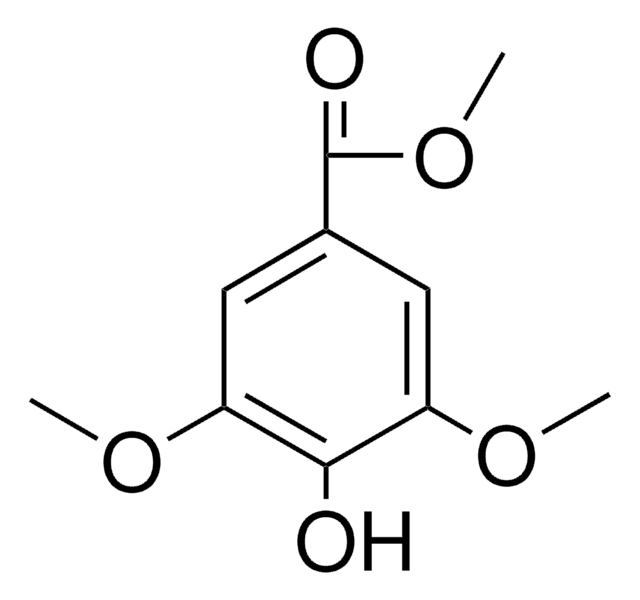P7251
3-Phenyllactic acid
≥98%
Sinônimo(s):
α-Hydroxyhydrocinnamic acid, β-Phenyllactic acid, 2-Hydroxy-3-phenylpropionic acid
About This Item
Produtos recomendados
Ensaio
≥98%
forma
powder
cadeia de caracteres SMILES
OC(Cc1ccccc1)C(O)=O
InChI
1S/C9H10O3/c10-8(9(11)12)6-7-4-2-1-3-5-7/h1-5,8,10H,6H2,(H,11,12)
chave InChI
VOXXWSYKYCBWHO-UHFFFAOYSA-N
Procurando produtos similares? Visita Guia de comparação de produtos
Aplicação
- O
- -Acetyl-3-phenyllactic acid by reacting with acetic anhydride in the presence of pyridine.
- Ethyl 2-oxo-1-(phenylmethyl)-2-[(phenylmethyl)amino]ethyl carbonate by one pot reaction with 2-ethoxy-1-(ethoxycarbonyl)-1,2-dihydroquinoline (EEDQ) and aniline.
- Phenylmethyl-1,3-dioxolane-2,4-dione by condensation reaction with trichloromethyl chloroformate (diphosgene) in the presence of activated charcoal.
- Enantioselectivity of lipase in transesterification
- Oxidation by glycolate oxidase and catalase
Aplicação
Código de classe de armazenamento
11 - Combustible Solids
Classe de risco de água (WGK)
WGK 3
Ponto de fulgor (°F)
Not applicable
Ponto de fulgor (°C)
Not applicable
Equipamento de proteção individual
Eyeshields, Gloves, type N95 (US)
Certificados de análise (COA)
Busque Certificados de análise (COA) digitando o Número do Lote do produto. Os números de lote e remessa podem ser encontrados no rótulo de um produto após a palavra “Lot” ou “Batch”.
Já possui este produto?
Encontre a documentação dos produtos que você adquiriu recentemente na biblioteca de documentos.
Os clientes também visualizaram
Chromatograms
application for HPLCNossa equipe de cientistas tem experiência em todas as áreas de pesquisa, incluindo Life Sciences, ciência de materiais, síntese química, cromatografia, química analítica e muitas outras.
Entre em contato com a assistência técnica












